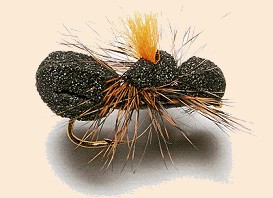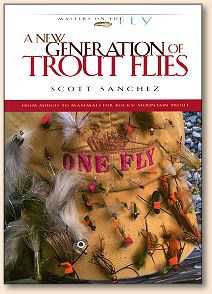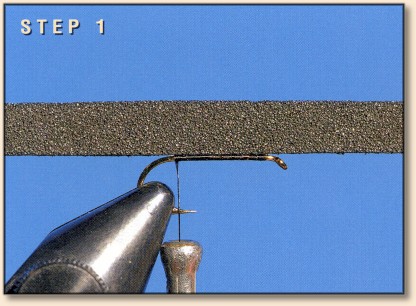
1. Cut a strip of foam that is about as wide as the
gap of the hook.
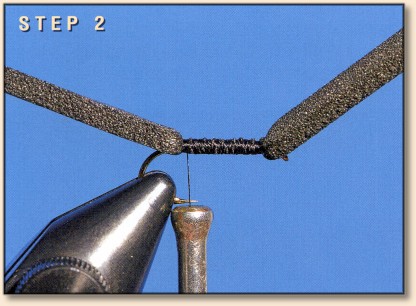
2. Cement the hook shank with super glue and start your
thread. Tie down the center of the foam on the top of the
hook shank.
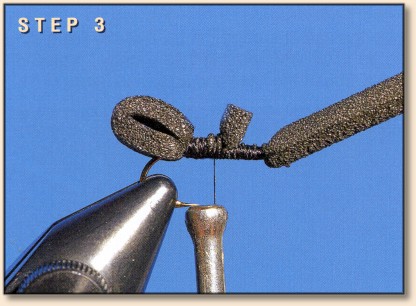
3. Fold the foam at the rear of the hook and make an
extended body that reaches back two thirds of the shank
length. Tie it off. Bind down the foam with thread up
to mid-shank. Trim the butts so they are even in height
with the body.
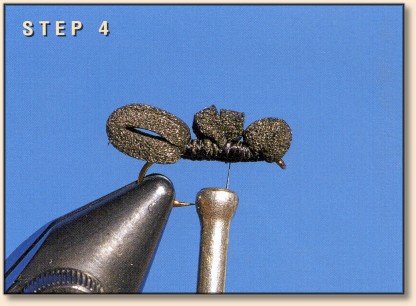
4. Fold the front foam over to make a head. The head
should be about one third of the shank in length.
Secure it with thread and then bind it down with
thread until it butts against the other foam strip.
Trim the butts even with the abdomen foam.
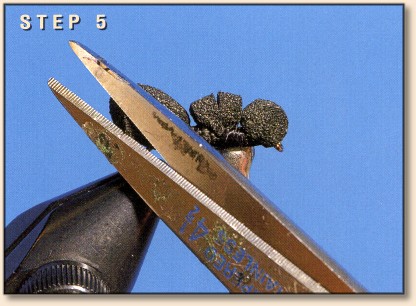
5. Round off the ends of the foam butt and
head with your scissors to make them look
more realistic.
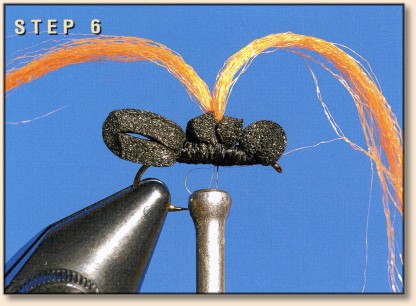
6. With a finger, push down in the center of the
foam strips. Then take a strand of colored Antron,
put your thread around it in the middle, and pull
it down in between the foam strips. Secure the
Antron with thread.
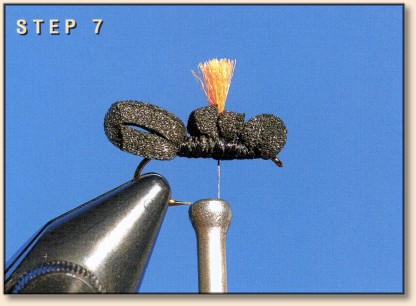
7. Trim the indicator to as long as the gap
of the hook.
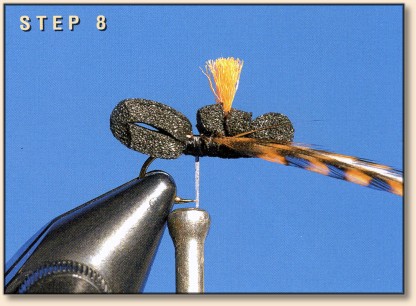
8. Tie in a hackle along the side of the foam
strips. The easiest way to do this is to set
the butt of the hackle against the foam and hold
in place with the thumb of your left hand. Next
push down on the rear foam strip and indicator with your
left index finger to open them up. Run your thread
over the hackle stem and through the center of the
foam strips.
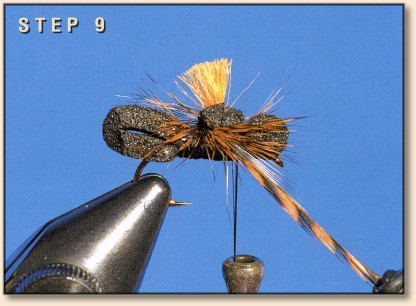
9. Wrap the hackle around the base of the foam
strips and tie it off. You will need to slightly
"weave" the hackle around the head and abdomen
foam.
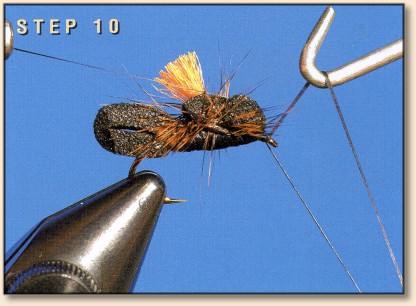
10. Pull your thread up under the body and
around the hook eye, and then whip-finish.
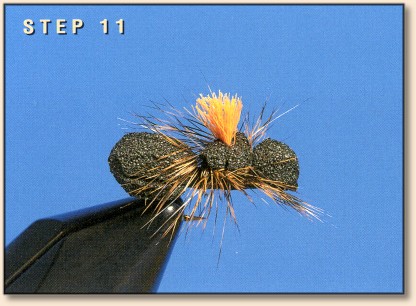
11. The finished fly. ~ Scott Sanchez

